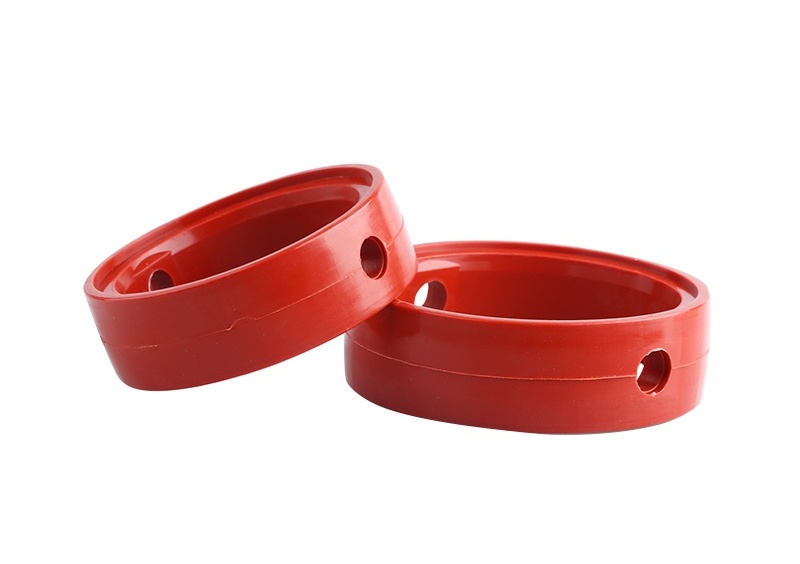Butterfly valves are widely valued for their cost-effectiveness and rapid actuation, where seal performance directly dictates valve reliability and lifespan. Seal designs vary significantly, each suited to specific operating conditions. This article examines core seal structures, materials, and their practical applications.
1. Core Seal Structures & Function
Butterfly valve seals comprise the seat ring and disc edge sealing surface, categorized into two primary types:
- Soft Seals:
Feature an elastomeric seat (rubber, PTFE) mounted in the valve body or disc. Closure compresses the disc edge (usually metal) into the soft seat, deforming it for a tight seal.
Advantages: Low sealing stress, near-zero leakage (Class VI possible), low cost, minimal torque.
Disadvantages: Limited temperature/pressure/chemical resistance; vulnerable to erosion and particle damage; unsuitable for frequent throttling. - Metal Hard Seals (Triple Offset Design – Fig. 1):
Utilize metal-to-metal sealing (e.g., stainless steel, alloys). Key design elements:- 1st Offset: Stem axis offset from pipeline center.
- 2nd Offset: Stem axis offset from disc sealing face center.
- 3rd Offset (Critical): Conical-angle sealing profile enables line/small-area contact.
Advantages: Exceptional temperature/pressure/erosion/cavitation resistance; long life; potential reusability.
Disadvantages: High manufacturing cost; high seating stress; increased torque; potential low-pressure leakage (typically Class IV).
Fig. 1: Triple Offset Metal Seal Structure
(Visual: Demonstrates conical line contact eliminating sliding friction during operation)
2. Key Performance Comparison
Soft Seals vs. Hard Seals:
- Temperature: Soft seals operate between -50°C and 200°C (PTFE/rubber dependent), while metal seals withstand extremes from -196°C to 600°C+.
- Pressure: Soft seals suit ≤ PN25 (≈ ANSI 150). Metal seals handle PN16-PN150 (≈ ANSI 900).
- Leakage: Soft seals achieve superior near-zero leakage (Class VI). Metal seals reach Class IV/V, improving under high pressure.
- Media Compatibility: Soft seals excel with water/air/neutral fluids. Metal seals tolerate steam, hydrocarbons, slurries, corrosive fluids, and hot gases.
- Robustness: Metal seals offer superior resistance to particles, erosion, and wear. Soft seals degrade rapidly in abrasive or frequent-throttling service.
- Cost & Operation: Soft seals are lower cost and require minimal torque. Metal seals demand higher initial investment and torque but offer longevity in harsh conditions.
- Applications: Soft seals dominate HVAC, water systems, and low-pressure gas. Metal seals are essential in refining, steam lines, chemical processing, and oil/gas.
3. Soft Seal Seat Materials
Material selection defines performance boundaries:
- NBR (Nitrile Rubber): Resistant to oils, hydrocarbons (-20°C to 80°C). Use: Water, compressed air, petroleum-based fluids.
- EPDM (Ethylene Propylene Diene): Resists hot water/steam (<150°C), ozone, alkalis. Use: Heating systems, food/beverage, humid air.
- FKM (Fluorocarbon Viton®): Handles oils, fuels, acids, high temps (-20°C to 200°C). Use: Chemical processing, fuel lines, acidic media.
- PTFE (Polytetrafluoroethylene): Chemically inert (-50°C to 200°C), low friction. Used as:
- Pure Seats: Corrosion resistance, moderate sealing.
- Reinforced Seats (glass/graphite): Better cold-flow resistance.
- Lined Seats (lip/bubble-tube): Combines elasticity and chemical resistance.
4. Metal Seal Materials & Treatments
Performance hinges on material pairing and surface engineering:
- Material Strategy:
- Dissimilar material pairing prevents galling (e.g., stainless vs. Stellite®).
- Seat surface hardness > Disc surface hardness (by ~HRC 2-5), making the disc replaceable.
- Surface Enhancements:
- Hardfacing: **Stellite 6® (cobalt-based, HRC 40-50) or Inconel 625®** (nickel-based) overlays resist wear/corrosion. Primary solution for severe service.
- Case Hardening: Flame/plasma/laser hardening or nitriding (≥HV 1000) boosts wear/galling resistance.
- Thermal Spray: HVOF-applied WC (Tungsten Carbide) or Chromium Oxide coatings provide extreme surface durability.
- Exotic Alloys: Hastelloy® or duplex steel used in highly corrosive environments (high cost).
5. Limitations & Selection Criteria
Key Considerations:
- Soft Seal Limits: Permanent compression set, chemical incompatibility (swelling/degradation), cold-flow/creep (PTFE/rubber), particle damage.
- Hard Seal Limits: Potential low-pressure leakage, higher cost/torque.
- Selection Drivers: Media properties (T, P, corrosivity, solids), leakage requirements, lifecycle frequency, operational severity, and budget.
Conclusion:
Butterfly valve selection is defined by the seal structure-material synergy. Soft seals (EPDM/NBR/PTFE) excel in cost-sensitive, low-pressure water/air applications. FKM soft seals or PTFE composites address corrosive media. Triple-offset metal seals with Stellite®/hardened surfaces are mandatory for steam, hydrocarbons, high T/P, and erosive flows. Nickel-based materials serve extreme conditions. Rigorous evaluation of operating parameters and material properties is crucial; overlooking seal specifications risks leakage, premature failure, and costly downtime.
Post time: Aug-06-2025

